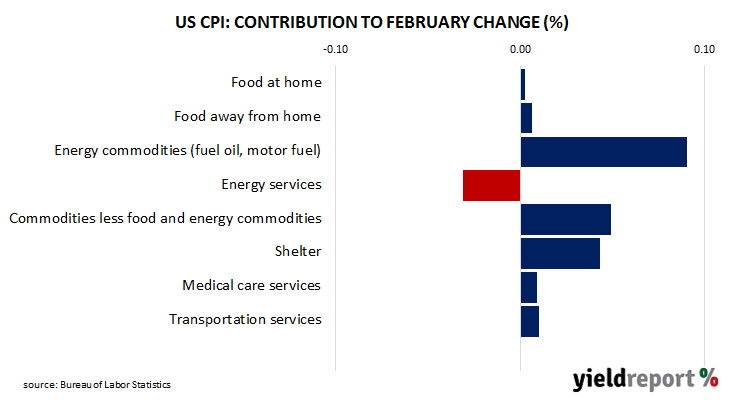The annual rate of US consumer inflation has dropped from nearly 3% in July 2018 to well below 2% in the first two months of 2019. At the same time, core inflation has been much less volatile and it has ranged between 2.10% and 2.30%. In recent times, differences between the two measures has mostly been caused by changes in gasoline (petrol) prices.
Consumer price index (CPI) figures released by the Bureau of Labor Statistics indicated seasonally-adjusted consumer prices increased on average by 0.2% in February, in line with the consensus figure but higher than January’s flat result. On a 12-month basis, the inflation rate remained at January’s annual rate of 1.5%. The primary driver of the increase was another move in gasoline prices.
 “Core” inflation, a measure of inflation which strips out the volatile food and energy components of the index, increased on a seasonally-adjusted basis by +0.1% for the month, in line with expectations. The annual rate remained unchanged at 2.1% after January’s reading was revised down a little.
“Core” inflation, a measure of inflation which strips out the volatile food and energy components of the index, increased on a seasonally-adjusted basis by +0.1% for the month, in line with expectations. The annual rate remained unchanged at 2.1% after January’s reading was revised down a little.

